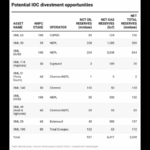
Treasury bill (T-bill) rates offered this week may move lower as softer than expected US consumer inflation data supported expectations of further monetary easing by the US Federal Reserve.
The Bureau of the Treasury (BTR) on Monday will auction P22 billion in T-bills, or P7 billion in 91-day securities, and P7.5 billion each in 182- and 364-day securities.
Rizal Commercial Banking Corporation Chief Economist Michael L. T-bills could get rates low to track the week-on-week decline seen in the secondary market, Ricafort said in a Viber message, amid bets that the Fed will cut rates for the second consecutive time following the release of soft September US consumer price index (CPI) data this week.
He said the US central bank is also expected to continue its easing cycle, which will also support further rate cuts by the Bangko Sentral ng Pilipinas (BSP).
In the secondary market on Friday, yields on 91-, 182- and 364-day T-bills fell 4.45 basis points (bps), 4.03 bps and 4.05 bps week-on-week to end at 4.9263%, 5.0977% and 5.1626%, respectively, based on PHP Bloomberg Ratings Service reference rate data. Published on the website of the Philippine Dealing System on October 24.
US consumer prices rose slightly less than expected in September as gasoline price increases were partly balanced by a sharp decline in fares, putting the Federal Reserve on track to cut interest rates again this week, Reuters reported.
The report was published despite an economic data blackout caused by the U.S. government shutdown to help the Social Security Administration calculate 2026 cost-of-living adjustments for millions of retirees and other benefit recipients who will get a 2.8% raise.
It was initially scheduled for October 15 and the White House warned that the October inflation report would not be published for the first time because the shutdown had halted data collection.
The Labor Department's Bureau of Labor Statistics (BLS) said the consumer price index rose 0.3% last month after climbing 0.4% in August. The BLS said CPI data collection was completed before the shutdown. Nevertheless, as the statistical agency used imputation to fill in missing information, the share increased from 36% to 40% in August. A 4.1% jump in gasoline prices was the main driver of the CPI increase.
In the 12 months to September, the CPI rose 3% after rising 2.9% in August. Economists polled by Reuters had expected the CPI to rise 0.4% monthly and 3.1% on a year-on-year basis.
Excluding volatile food and energy components, the CPI rose 0.2% after rising 0.3% in August. Slow fare inflation led to a decline in the so-called core CPI.
Economists estimate that consumers have borne about 20% of the import duties so far.
He said businesses have avoided passing on the full cost of tariffs to consumers on rents, now the focus of the US central bank, which is expected to cut its benchmark overnight interest rate by a further 25 bps to the 3.75%-4% range this Wednesday.
The Fed tracks the personal consumption expenditures (PCE) price index for its 2% inflation target. Based on CPI data, economists estimate that core PCE inflation rose 0.2% in September, a year-on-year gain of 2.9%.
However, the ongoing shutdown will delay the release of that data. The shutdown, the second longest in history, is raising concerns over the quality of future inflation reports, given the suspension of collection efforts.
Consumer price data is collected throughout the month, the bulk of it physically, and the closure means more than two-thirds of October's data is already missing.
During the 2013 government shutdown, about 75% of CPI data was collected for the month of October. BLS is already struggling with resource constraints due to budget and staffing.FData collection for parts of the CPI basket has been suspended in some areas across the country due to the outages.
Meanwhile, the BSP cut benchmark interest rates by 25 bps for the fourth consecutive time this month, taking the policy rate to 4.75%. This has cut borrowing costs by a cumulative 175 bps since the rate cut cycle began in August 2024.
BSP Governor Eli M. Remolona, Jr. said more cuts were possible in the coming months to help stimulate the economy. The next policy meeting of the Monetary Board is scheduled for December 11.
Last week, BTR raised P22 billion from the auction of T-bills as planned, as the offering was more than four times oversubscribed, bringing total bids to P95.17 billion.
As bids reached P26.68 billion, the Treasury provided P7 billion in 91-day securities. The average yield for the period rose 0.4 bp from the previous auction to 4.884%, with accepted rates ranging from 4.82% to 4.93%.
It also raised P7.5 billion from 182-day T-bills as per the program, which attracted bids worth P40.63 billion. Six-month papers yielded an average rate of 5.058%, down 1.4 bps from last week. The acceptable yield was 5.01% to 5.088%.
In the end, the government raised P7.5 billion from the 364-day period as planned, attracting P27.86 billion in tenders. The average yield on one-year bills declined 2.2 bps to 5.097%, with lending rates rising from 5.05% to 5.145%.
BTR plans to raise P180 billion from the domestic market this month, or P110 billion through T-bills and P70 billion through treasury bonds.
The government borrows from local and foreign sources to finance its budget deficit, which stands at P1.56 trillion or 5.5% of GDP this year. , Aaron Michael C. Cy with reuters










